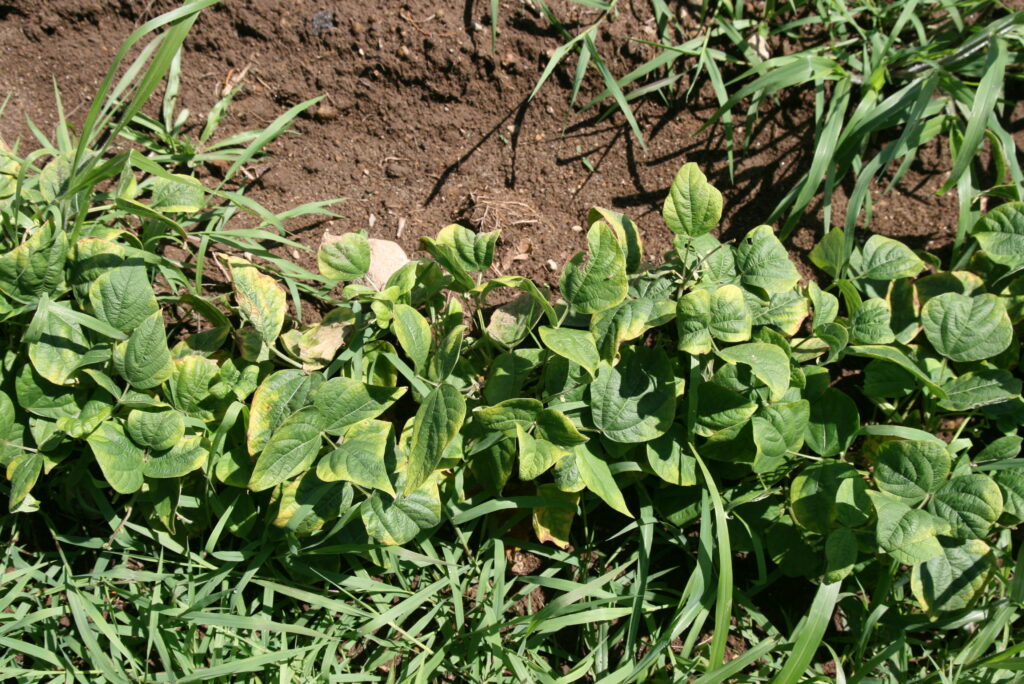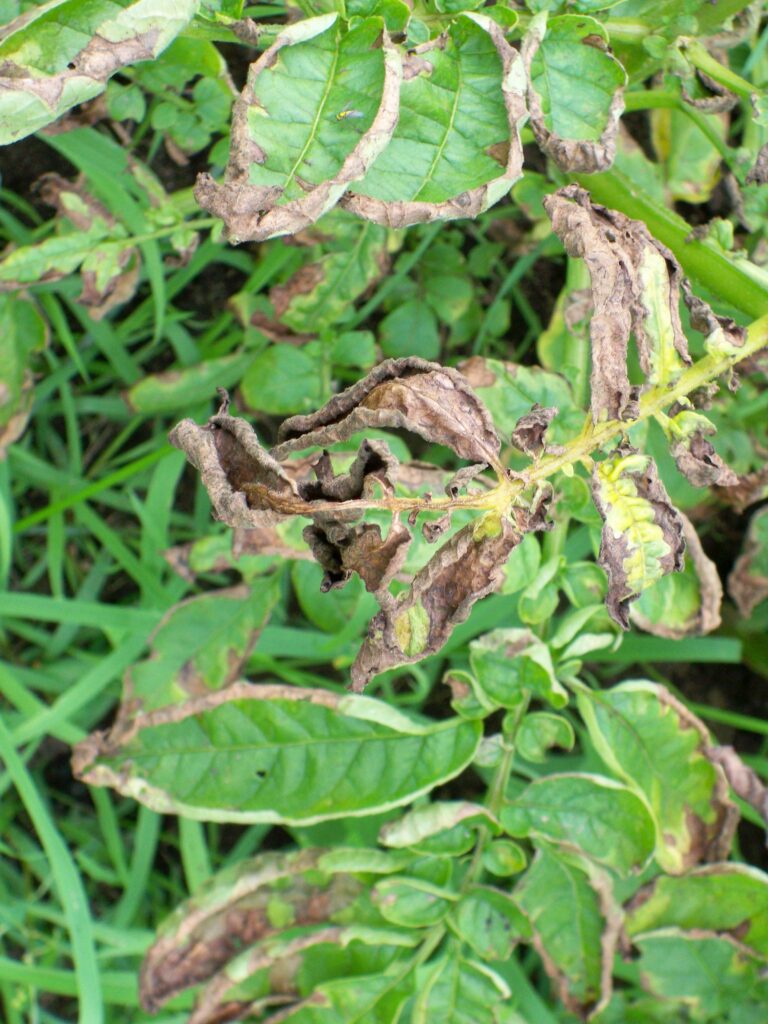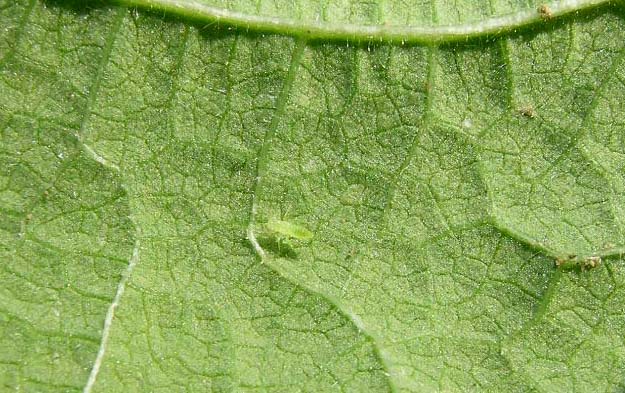
Pest: Potato Leafhoppers (Empoasca fabae)
Pest identification and lifecycle, most common symptoms and crops affected:
The potato leafhopper has been arriving here in New England earlier and earlier. If you see unexplained yellowing of leaves of beans or potatoes, check for the critter. They primarily feed on beans, potatoes, eggplants, strawberries and alfalfa, but will also damage hops. PLH does not overwinter anywhere near here. They overwinter way down south on the coast of the Gulf of Mexico, and leapfrog up here in mass migrations. Sometimes hardly any make it, and other years there are massive numbers. Once they get here there are a few generations during the season and often become a bigger and bigger problem. The first to arrive are females, and they are usually carrying fertilized eggs when they get here. They first land in trees, but quickly search out vegetable crops.

The damage from leafhopper can be catastrophic. The bug sucks the juice out of the plant and injects a toxin that clogs phloem (the plant’s food conducting tissue). The symptoms look like a disease after a while, rather than insect damage, and are frequently mistaken as such. The leaves first get pale, then yellow and then brown from the edges. Then the plant dies. The symptoms are called “hopperburn.”

The adult PLH is very light green and wedge shaped and tiny (an eighth of an inch long). The best way to find them is to brush the plant, see a bunch of these tiny things fly up, and watch one of the white-looking bugs land. The nymphs are similar to the adult, but have no wings and are even smaller. Nymphs live on the underside of the leaves. If you disturb a nymph you will see it run and it can run sideways as fast as forward. This is a clue that you have PLH and not some other less harmful species of leafhopper.

The adults are flighty. When you brush your crop you will see them fly up. If there is a cloud of them, you are in trouble. Researchers have developed a threshold before treatment is recommended. Thresholds vary but here is one that is typical: Treat potatoes if 5 adults or 15 large larvae are found on 50 leaves.
Management options:
Cultural:
Crop rotation does nothing for you with this pest, since they are already coming from far away. Covering your crops with a row cover or exclusion netting works well.
Pesticides approved for use in certified organic production (as a last resort):
Effective insecticides are limited. The only material that I have seen work that is allowed in organic production is pyrethrum, so Pyganic is the recommendation that I make. If scouting suggests the need, spray in the evening, get good coverage including the undersides of the leaves, and don’t wait until it is too late. If you wait to see leaf symptoms, it is too late. Plants will not recover.
Please note: This information is for educational purposes. Any reference to commercial products, trade or brand names is for information only, and no endorsement or approval is intended. Pesticide registration status, approval for use in organic production and other aspects of labeling may change after the date of this writing. It is always best practice to check on a pesticide’s registration status with your state’s board of pesticide control, and for certified organic commercial producers to update their certification specialist if they are planning to use a material that is not already listed on their organic system plan. The use of any pesticide material, even those approved for use in organic production, carries risk — be sure to read and follow all label instructions. The label is the law. Pesticides labeled for home garden use are often not allowed for use in commercial production unless stated as such on the label.
Source material attribution: Written by Eric Sideman, MOFGA crop specialist emeritus.

